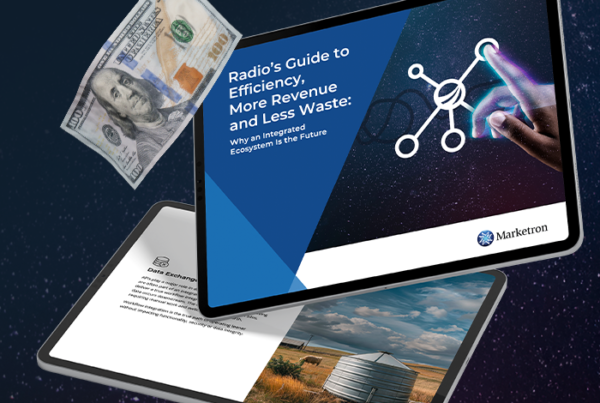Technology is only effective if it’s usable, scalable, productive and reliable. Unfortunately, not all tech that broadcast sales teams use meets these criteria. Instead, you must access legacy systems not built for sales. They don’t have intuitive user interfaces, creating silos and challenges that can have a direct impact on seller performance and productivity.
Have you looked at your workflows lately? Do your salespeople complain about manual entry and the time they spend moving back and forth between traffic systems and other sales-focused platforms?
Evaluating these workflows can be a significant eye-opener that shows the adverse impact on seller performance and productivity. In this post, we’ll examine the effect of these old systems and how to avoid them with better technology.
How Productive Are Your Salespeople?
This might be a question that comes to mind regularly, but you may not have clear insight into the answer. Rather, you measure a seller’s success based on hitting quotas and budgets. But how many non-revenue-generating tasks do they suffer through each day?
According to a study that deemed technology the “most broken workplace process,” 49% of U.S. workers said they had trouble locating documents. Another 43% said approvals and requests are troublesome. If technology isn’t streamlining these processes, the search for information never ends. It’s costing you time, money and opportunity.
Checking Avails and Proposal and Order Management Are Inefficient in Legacy Systems
One of the biggest time drains and areas for error is using legacy traffic systems to check avails. First, these can be intimidating platforms, even for seasoned users. It takes considerable effort to go through multiple screens and drop-down menus to find accurate avail information.
Even after they source this, they still must verify it with traffic managers. As a result, there could be corrections needed. They have to further interact with traffic systems, rekeying information from the proposal into the traffic system to convert it to an order.
Finding rates can be equally frustrating. Your sellers must come to you each time for rate information and approval. That adds more time to the process and doesn’t consider data, timelines and other factors. Pricing is much more rigid, which could leave money on the table.
Your salespeople are always chasing information instead of being able to access it easily. Putting them in a position of friction when using these outdated interfaces zaps productivity. In fact, an enterprise sales team can lose up to 70 hours per week on proposal and order management activities, much of which you can attribute to hard-to-use software.
Bad User Experiences Can Sow Dissatisfaction and Disengagement
When technology doesn’t acclimate to user needs, it creates poor user experiences, which can lead to dissatisfaction and disengagement.
Engagement is critical to success, and technology plays a role here. High engagement typically correlates to higher profitability, whereas low engagement can result in losses. Here are some insights from a Gallup study comparing high-engagement organizations with low-engagement ones. Engaged employees:
- Boost productivity by 17%
- Increase sales by 20%
- Increase profitability by 21%
These points validate the strategy to engage, but if your people battle technology all day, they’ll start to tune out. Finding and retaining salespeople is a challenge, and you don’t want to lose high performers because they don’t have the right tools!
Legacy Systems Don’t Provide Seller Performance Visibility
Another thing to consider with legacy systems and using multiple applications to complete a single workflow is the lack of visibility regarding seller performance. You may not have access to this kind of reporting, or if you do, it may be cumbersome because of outdated interfaces. Being able to run reports based on real-time data of sales activities is crucial to any manager. It allows you to forecast and see what’s in the pipeline.
If you can develop these reports based on each seller, you can see their efforts and actions. In turn, you can recommend tips, strategies or training to boost their performance. A legacy system can’t deliver on visibility like a modern sales growth platform can.
Improve Legacy Processes, Embrace Better Technology
To eliminate the interaction between sales and legacy interfaces, you’ll need to find a better technology solution. It should integrate with your legacy traffic products, such as WideOrbit or Marketron Visual Traffic. It will allow your sales team to use a single platform for the entire sales process. You can experience that and more with Marketron REV.
![]()
REV streamlines proposal and order management into sales-centric workflows. You can:
- Create proposals and convert them to orders in minutes, not hours, without accessing the traffic system.
- Gather real-time avails without looking at the traffic system, eliminating interaction with old interfaces.
- Find customer information in the CRM module to eliminate re-entry.
- Run a variety of seller performance reports (and campaign performance, too) with a few clicks.
- Leverage a dynamic pricing tool using data and demand to determine rates by using rate curves and the ability to set floors, ceilings and discount tolerances.
REV offers these core features and more. Boost seller performance and increase revenue by 5% with our platform. Explore how it works today by requesting a demo.






